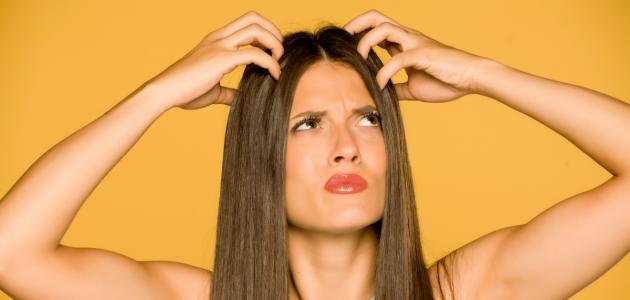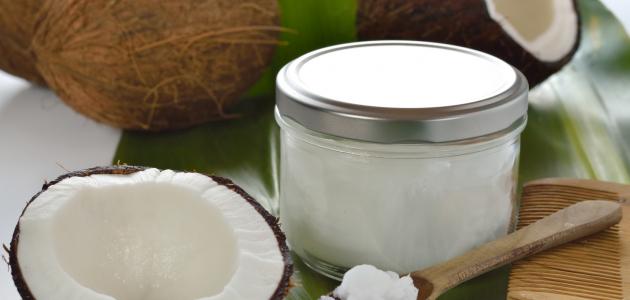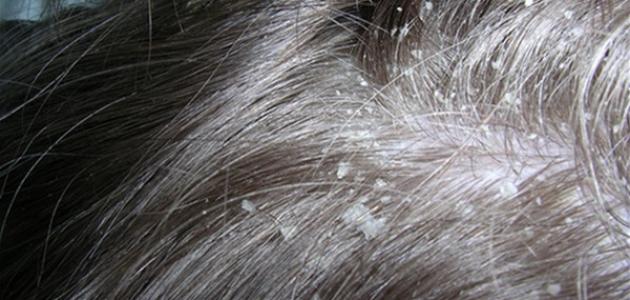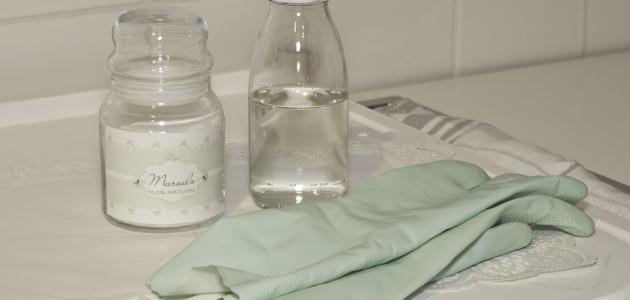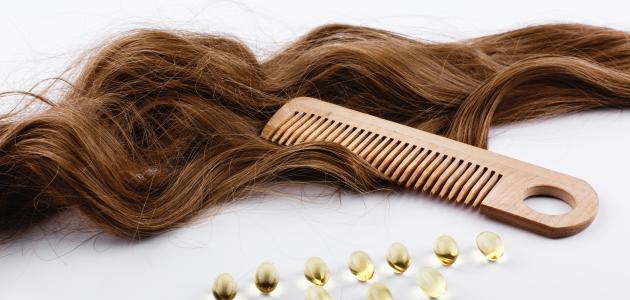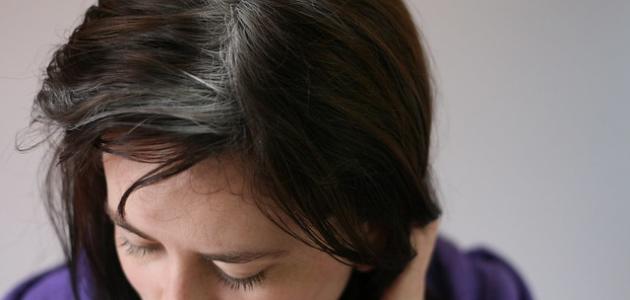Head itching
Scalp itch can be defined as an uncomfortable tingling or strange sensation in the scalp that stimulates the feeling of wanting to scratch or scratch the affected area, and although itchy scalp is a common skin problem, studies conducted to determine its prevalence is still limited, as its prevalence has been identified in a small number of studies, as BioMed research international published in 2019 that the prevalence of scalp itching ranges between 13% and 45%, according to studies precedent.
Causes of itchy head
There are many different reasons that may lead to suffering from itching in the head, and they can be explained in some detail as follows:
Dandruff
Dandruff is formed as a result of an increase in the rate of division of skin cells in the scalp than the normal rate, which in turn leads to the accumulation of dead skin cells, peeling and sticking to the hair, and suffering from itching, and gatherings of these dead cells can usually be seen on the hair.
atopic dermatitis
Atopic dermatitis is also known as eczema, and it is a common chronic skin condition that occurs as a result of inflammation and irritation of the skin, which causes a feeling of itching. Intense itching may lead to scratching of the area, which causes symptoms such as redness and swelling of the area. , and peeling of the skin, and it is worth clarifying that these symptoms appear in the form of seizures; That is, symptoms appear for periods and disappear for other periods, and this condition usually occurs in children, but it is also possible to occur at any age, and it is worth noting that it is a non-infectious health condition, meaning that it is not transmitted from one person to another.
Read also:Scabies disease and its treatmentseborrheic dermatitis
Seborrheic dermatitis is also known as seborrheic eczema, and it is an inflammation of the skin that is concentrated around the sebaceous glands, and leads to yellow discoloration of the affected areas and the appearance of greasy crusts on the skin, and some factors may play a role in Increasing the severity of the condition, such as: hormonal changes, psychological tension, and skin sensitivity, and although seborrheic dermatitis may appear in different areas of the skin that contain sebaceous glands, the chances of it appearing in the scalp are more common.
scalp psoriasis
Scalp psoriasis is a common health problem that may affect the skin, and this type of psoriasis may affect the entire scalp, and may extend to the back of the neck, forehead, and behind and inside the ears, and this type of psoriasis is represented by the appearance of skin spots Reddish and scaly bumps on the skin.
Ringworm of the scalp
Ringworm of the scalp or head (in English: Scalp ringworm) occurs due to a fungal infection, and not, as many people think, that it is caused by an infection with a type of parasitic worm. The infection of the scalp is represented by the appearance of a red ring on the scalp or some dry skin spots, and it is worth mentioning The infection may lead to damage to the hair follicles in the affected area and hair loss, and this type of infection may be transmitted from one person to another through the use of hairdressing tools, a hair towel, or through the seat cushions.
Read also:Getting rid of nitshead lice
Head lice are known as small, gray-brown insects that inhabit the scalp. Head lice infestation is not limited to children, as some believe, but infects all different age groups, and is often transmitted through direct contact between The hair of the infected person and the hair of a healthy person, and head lice cause itching if the scalp is sensitive to the droppings and saliva that are produced by these insects.
Contact dermatitis
Contact dermatitis occurs when the skin is exposed to some allergens, such as certain types of soaps and cosmetics, which leads to the appearance of an itchy rash in the affected area of the skin, and this rash begins to appear during a period of time. Exposure to the allergen is very short, not more than two minutes, and it may last up to a full month in some cases. It should be noted that contact dermatitis is a non-infectious health condition.
urticaria
Urticaria (in English: Hives) is one of the types of allergic skin diseases that lead to the appearance of red bumps in the skin that cause itching in different areas of the skin, including the scalp, and often these bumps disappear within a short period that does not exceed several hours, but they may reappear Again, if the bumps continue to appear and disappear for more than six consecutive weeks, this condition is called chronic urticaria.
Read also:Oily dandruff treatmentscabies
Scabies infection leads to suffering from skin itching that may be severe in some cases, as it may cause inability to sleep, and scabies infection occurs as a result of infection with the scabies mite (in English: Itch mite), which may move to the scalp also.
Neurological disorders
The causes of skin itching are not limited to skin disorders, but may be caused by other disorders such as neurological disorders, as some neurological problems send random nerve signals to the brain that lead to the feeling of itching, or the itching may be caused by a disorder in the brain’s ability to interpret nerve signals. Postherpetic neuralgia and brachioradial pruritus are among the neurological problems that may lead to itching.
skin cancer
Skin cancer usually develops in areas most exposed to sunlight, such as: scalp, neck, arms, lips, ears, chest, etc., and skin cancer may begin in the form of a skin lesion, rash, or irregular spots on the skin. Skin.
